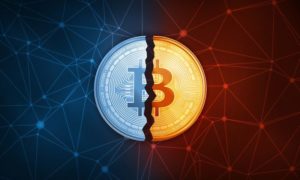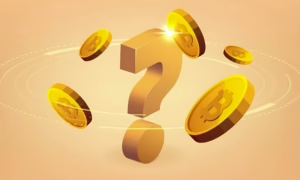What Is Bitcoin Halving And How Does it Affect Price?

Bitcoin is a network in which there is a finite number of coins. The system is designed to allow for the release of a maximum of 21 million coins into the money supply. This process is regulated by an algorithm, which established certain conditions to release more coins into the money supply until supply is finally capped. This requires a mechanism with a declining release of coins into the money supply. This mechanism is widely known as the halving. But what is the halving exactly and how does it affect price?
The simplest definition of Bitcoin halving: The process by which block rewards in the Bitcoin network decrease by 50% periodically – once every time a set of 210,000 blocks is mined.
Bitcoin Halving: Supply-Side Economics
Bitcoin requires a transparent money supply system that cannot be manipulated to remain decentralized and free from the intervention of intermediaries or monetary authorities. Therefore, the system of rewards was established, and a cap was introduced. Miners know exactly how many coins they will get for each block they mine, and that number decreases at a pre-determined rate, providing transparency and predictability.
This is a supply-side mechanism that allows Bitcoin to function as a deflationary currency, without a central bank at its helm. The mechanism works in the following manner:
- Bitcoin blocks under normal circumstances are mined at a rate of one every 10 minutes.
- With a cap of 21 million coins, block rewards must decline in a steady and predictable manner to avoid flooding the system with too much money at once, and still have enough money to keep the economy viable.
- To satisfy the conditions above, considering the speed with which new blocks are mined, the Bitcoin halving occurs once every 210,000 blocks are mined.
- That is once every 4 years more or less – if mining rates remain at 1 block every 10 minutes.
After the Bitcoin Halving Event, Should Prices Rise?
Once the Bitcoin halving occurs, new block rewards decrease by 50% as compared to the rewards given on the previous 210,000 block series. This regulates the number of Bitcoins released into the system. In this system, supply-side economics set the stage for scarcity and create an environment that is conducive to the appreciation of Bitcoin.
This table shows how the Bitcoin halving event affects Bitcoin supply. Keep in mind that total Bitcoin supply is capped at 20,999,999.9769 BTC – almost 21 million:
| Block Range | Stage | Block Reward (BTC) | Supply Mined | BTC in Cirulation |
|---|---|---|---|---|
| 1 – 210K | 1 | 50 | 50% | 10,500,000 |
| 210K – 420K | 2 | 25 | 75% | 5,750,000 |
| 420K – 630K | 3 | 12.5 | 87.5% | 18,375,000 |
| 630K – 840K | 4 | 6.25 | 93.75% | 19,687,500 |
| 840K – 1.05M | 5 | 3.125 | 96.875% | 20,343,750 |
| 1.05M – 1.26M | 6 | 1.5625 | 98.4375% | 20,671,875 |
Less New Coins for More Users?
Just as the Bitcoin halving mechanism primes Bitcoin prices to rise due to falling supply, demand is the ultimate factor that will determine whether this mechanism constrains supply enough to allow Bitcoin prices to rise. In other words, the Bitcoin halving doesn’t necessarily lead to a rise in Bitcoin prices, unless demand for Bitcoin grows. If Bitcoin rewards halve but demand remains constant, price will shift upwards, but the shift will not be as aggressive as it would be if demand increases. Any economics 101 supply and demand curve can show what to expect when demand remains constant or increases, while supply decreases. The result is always the same: price increases. But what if demand falls? Then the whole assumption that prices must rise after the Bitcoin halving proves to be wrong.
Prices Lag Behind Bitcoin Halving
Historically, Bitcoin prices have not necessarily increased immediately after the halving. After the second halving in 2016 for instance, Bitcoin prices remained close to the pre-halving price of $650 USD. That was after Bitcoin prices soared to over $1,000, a full year after the first halving in November 2012. In fact, after the first halving, prices hovered around the $12 to $15 USD range for almost 2 months. The second Bitcoin halving in 2016 provided interesting insights. Bitcoin prices started rising around 3 months before the halving, showing that the market was pricing the future supply constraints in. Then, about a year and a half after that Bitcoin halving, prices almost hit the $20,000 USD mark. These trends show us that the markets tend to price a modest increase in demand in, right before the Bitcoin halving, while the event itself sets off a buying frenzy that culminates somewhere between 13 and 18 months after the halving takes place.
Bitcoin Price Bust and the Setting for the Next Halving
A Bitcoin halving can well be the mid-point in the boom-bust-boom cycle that prices have gone through over the first decade of Bitcoin’s existence. There is a chance that this will be the case in the future as well, at least until the market understands how to react to the upcoming Bitcoin halving, which is highly predictable. In the meantime, demand and the exogenous factors that affect it, remain the hardest to gauge.
The Bitcoin halving mechanism creates unprecedented predictability within a monetary system. The paradox is that the mechanism also spawns an incredible game of speculation with regards to demand for Bitcoin. This is exactly why price will remain volatile until the market defines exactly what Bitcoin should be used for, how frequently it should be spent and in which situations it should be kept or spent. Until then the Bitcoin halving will have a perplexingly low influence on the fluctuation of Bitcoin prices.







